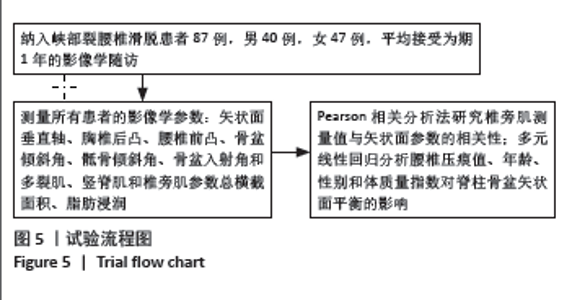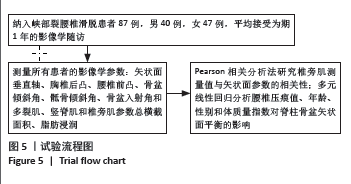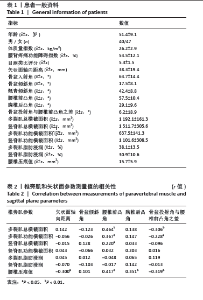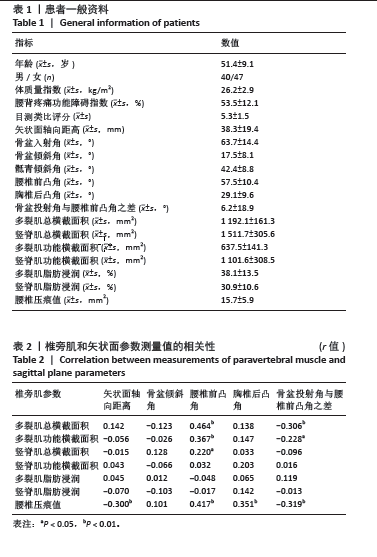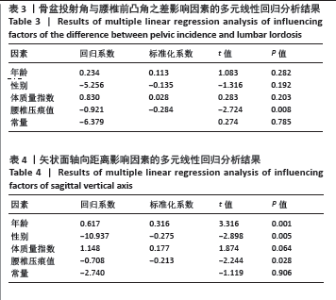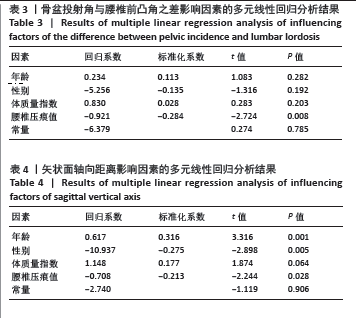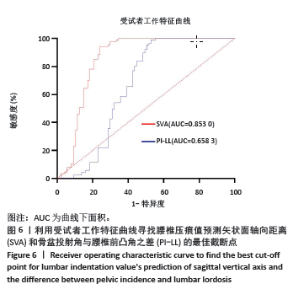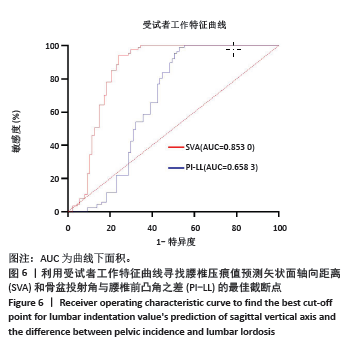[1] TARDIEU C, BONNEAU N, HECQUET J, et al. How is sagittal balance acquired during bipedal gait acquisition? Comparison of neonatal and adult pelves in three dimensions. Evolutionary implications. J Hum Evol. 2013;65(2):209-222.
[2] JABŁOŃSKA-SUDOŁ K, MACIEJCZAK A. Relationship between the spino-pelvic parameters and the slip grade in isthmic spondylolisthesis. Neurol Neurochir Pol. 2015;49(6):381-388.
[3] XIA W, FU H, ZHU Z, et al. Association between back muscle degeneration and spinal-pelvic parameters in patients with degenerative spinal kyphosis. BMC Musculoskelet Disord. 2019;20(1): 454.
[4] MENEZES-REIS R, BONUGLI GP, SALMON CEG, et al. Relationship of spinal alignment with muscular volume and fat infiltration of lumbar trunk muscles. PLoS One. 2018;13(7):e0200198.
[5] LEE ET, LEE SA, SOH Y, et al. Association of Lumbar Paraspinal Muscle Morphometry with Degenerative Spondylolisthesis. Int J Environ Res Public Health. 2021;18(8):4037.
[6] MORA-DE SAMBRICIO A, GARRIDO-STRATENWERTH E. [Spondylolysis and spondylolisthesis in children and adolescents]. Rev Esp Cir Ortop Traumatol. 2014;58(6):395-406.
[7] OH SK, CHUNG SS, LEE CS. Correlation of pelvic parameters with isthmic spondylolisthesis. Asian Spine J. 2009;3(1):21-26.
[8] LEE BH, PARK JO, KIM HS, et al. Spinal sagittal balance status affects postoperative actual falls and quality of life after decompression and fusion in-situ surgery in patients with lumbar spinal stenosis. Clin Neurol Neurosurg. 2016;148:52-59.
[9] SHAHIDI B, PARRA CL, BERRY DB, et al. Contribution of Lumbar Spine Pathology and Age to Paraspinal Muscle Size and Fatty Infiltration. Spine (Phila Pa 1976). 2017;42(8):616-623.
[10] MEAKIN JR, FULFORD J, SEYMOUR R, et al. The relationship between sagittal curvature and extensor muscle volume in the lumbar spine. J Anat. 2013;222(6):608-614.
[11] YAGI M, HOSOGANE N, WATANABE K, et al. The paravertebral muscle and psoas for the maintenance of global spinal alignment in patient with degenerative lumbar scoliosis. Spine J. 2016;16(4): 451-458.
[12] HICKS GE, SIMONSICK EM, HARRIS TB, et al. Cross-sectional associations between trunk muscle composition, back pain, and physical function in the health, aging and body composition study. J Gerontol A Biol Sci Med Sci. 2005;60(7):882-887.
[13] TAKAYAMA K, KITA T, NAKAMURA H, et al. New Predictive Index for Lumbar Paraspinal Muscle Degeneration Associated With Aging. Spine (Phila Pa 1976). 2016;41(2):E84-E90.
[14] TAMAI K, CHEN J, STONE M, et al. The evaluation of lumbar paraspinal muscle quantity and quality using the Goutallier classification and lumbar indentation value. Eur Spine J. 2018;27(5):1005-1012.
[15] RADOVANOVIC I, URQUHART JC, GANAPATHY V, et al. Influence of postoperative sagittal balance and spinopelvic parameters on the outcome of patients surgically treated for degenerative lumbar spondylolisthesis. J Neurosurg Spine. 2017;26(4):448-453.
[16] MATSUMOTO T, OKUDA S, MAENO T, et al. Spinopelvic sagittal imbalance as a risk factor for adjacent-segment disease after single-segment posterior lumbar interbody fusion. J Neurosurg Spine. 2017; 26(4):435-440.
[17] JUN HS, KIM JH, AHN JH, et al. The Effect of Lumbar Spinal Muscle on Spinal Sagittal Alignment: Evaluating Muscle Quantity and Quality. Neurosurgery. 2016;79(6):847-855.
[18] HIYAMA A, KATOH H, SAKAI D, et al. The correlation analysis between sagittal alignment and cross-sectional area of paraspinal muscle in patients with lumbar spinal stenosis and degenerative spondylolisthesis. BMC Musculoskelet Disord. 2019;20(1):352.
[19] CAO B, ZUO Y, XU Y, et al. Correlation between fat infiltration of paraspinal muscle and L4 degenerative lumbar spondylolisthesis in asymptomatic adults. Asian J Surg. 2023;46(2):834-840.
[20] BAILEY JF, MILLER SL, KHIEU K, et al. From the international space station to the clinic: how prolonged unloading may disrupt lumbar spine stability. Spine J. 2018;18(1):7-14.
[21] WANG W, SUN Z, LI W, et al. Relationships between Paraspinal Muscle and Spinopelvic Sagittal Balance in Patients with Lumbar Spinal Stenosis. Orthop Surg. 2022;14(6):1093-1099.
[22] XU S, GUO C, LIANG Y, et al. Sagittal Parameters of Spine-Pelvis-Hip Joints in Patients with Lumbar Spinal Stenosis. Orthop Surg. 2022; 14(11):2854-2862.
[23] SCHWAB F, UNGAR B, BLONDEL B, et al. Scoliosis Research Society-Schwab adult spinal deformity classification: a validation study. Spine (Phila Pa 1976). 2012;37(12):1077-1082.
[24] MANGIONE P, GOMEZ D, SENEGAS J. Study of the course of the incidence angle during growth. Eur Spine J. 1997;6(3):16316-16317.
[25] LAMARTINA C, BERJANO P. Classification of sagittal imbalance based on spinal alignment and compensatory mechanisms. Eur Spine J. 2014;23(6):1177-1789.
[26] BEEN E, KALICHMAN L. Lumbar lordosis. Spine J. 2014;14(1):87-97.
[27] MANDELLI F, NÜESCH C, ZHANG Y, et al. Assessing Fatty Infiltration of Paraspinal Muscles in Patients With Lumbar Spinal Stenosis: Goutallier Classification and Quantitative MRI Measurements. Front Neurol. 2021; 12:656487.
[28] SCHWAB F, PATEL A, UNGAR B, et al. Adult spinal deformity-postoperative standing imbalance: how much can you tolerate? An overview of key parameters in assessing alignment and planning corrective surgery. Spine (Phila Pa 1976). 2010;35(25):2224-2231.
[29] BESS S, SCHWAB F, LAFAGE V, et al. Classifications for adult spinal deformity and use of the Scoliosis Research Society-Schwab Adult Spinal Deformity Classification. Neurosurg Clin N Am. 2013;24(2):185-193.
[30] THAKAR S, SIVARAJU L, ARYAN S, et al. Lumbar paraspinal muscle morphometry and its correlations with demographic and radiological factors in adult isthmic spondylolisthesis: a retrospective review of 120 surgically managed cases. J Neurosurg Spine. 2016;24(5):679-685.
[31] KALICHMAN L, CARMELI E, BEEN E. The Association between Imaging Parameters of the Paraspinal Muscles, Spinal Degeneration, and Low Back Pain. Biomed Res Int. 2017;2017:2562957. |
